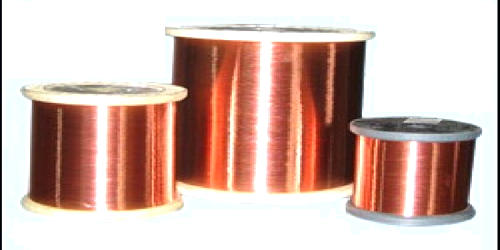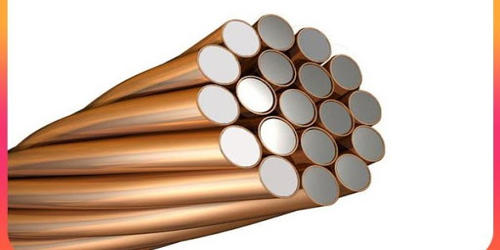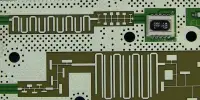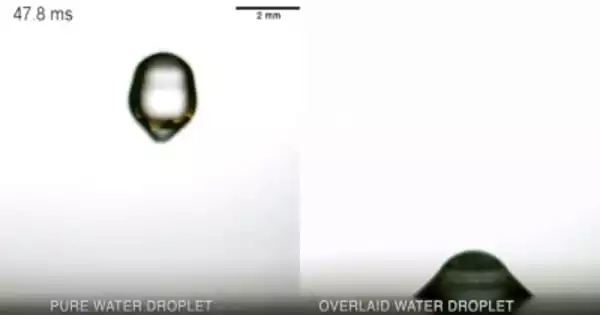Copper Clad Steel (CCS) is a composite conductor material containing a low carbon steel core surrounded by copper. It is a bi-metallic product, mainly used in the wire industry that combines the high mechanical resistance of steel with the conductivity and corrosion resistance of copper. It combines the high tensile strength of steel as its core and the conductivity properties of copper as its outer layer. This wire can be produced bare or electroplated with gold, silver, tin, solder, and nickel.
Copper-bonded steel is manufactured through a continuous electro-plating process of copper over a steel core, resulting in a permanent molecular bond between the two materials. It is made to ASTM B-452 standards with 40% conductivity in two tempers: soft and hard drawn. It is mainly used for grounding purposes, line tracing to locate underground utilities, drop wire of telephone cables, and inner conductor of coaxial cables, including thin hookup cables like RG-174 and CATV cable.
 Fig: Copper-clad Steel ware
Fig: Copper-clad Steel ware
Uses
Copper-clad steel wire is mainly used in manufacturing ground rods, solid wire, and solid conductors. It finds applications in grounding, a connection of ground rods to metallic structures, ground grid meshes, substations, power installations, and lightning arrestors. This wire is also sometimes used for power transmission.
Copper coated welding wire has become common since wire welding equipment has become popular.
Copper-clad steel is occasionally used for making durable radio antennas, where its HF conductivity is nearly identical to a same-diameter solid copper conductor. It is most often used in antennas with long spans of unsupported wire, which need extra strength to withstand high tension which would cause solid copper or aluminum wire to break or stretch excessively.
Properties
The main properties of these conductors include:
- The good corrosion resistance of copper
- High tensile strength of steel
- Resistance against material fatigue
Advantages
It is generally used in the manufacturing of stranded and solid conductors. Since the outer conductor layer is low-impedance copper, and only the center is higher impedance steel, the skin effect gives RF transmission lines with heavy copper-cladding a low impedance at high frequencies, equivalent to that of solid copper wire.
The copper provides the electrical conductivity and the steel contributes strength to the conductor. The tensile strength of copper-clad steel conductors is greater than that of ordinary copper conductors permitting greater span lengths than with copper.
Another advantage is that smaller diameter copper-clad steel conductors may be used in coaxial cables, permitting higher impedance and smaller cable diameter than with copper conductors of similar strength.
















